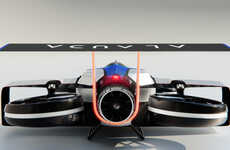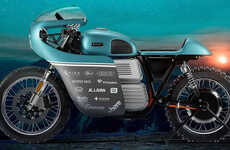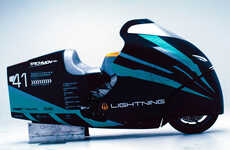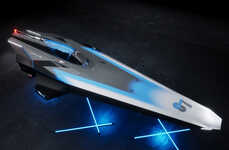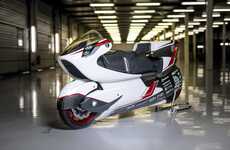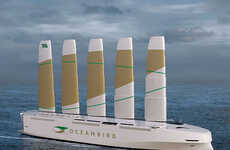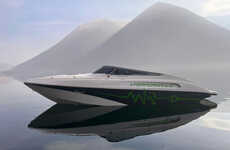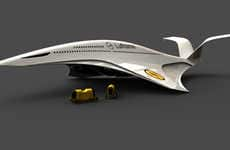
The Greenbird Breaks the Land Speed Record at 126.1 MPH
Samina Esha — April 4, 2009 — Autos
‘Greenbird,’ a carbon fiber composite vehicle that uses nothing but wind for power, has broken the world land speed record for wind-powered vehicles. After 10 years of hard work, British engineer Richard Jenkins finally broke the record in the dry field of Ivanpah Lake, Nevada by going 126.1 MPH (202.9km/h) in his Greenbird.
According to its creators, the Greenbird is a sort of land-roving sailboat equipped with a wing rather than a sail to propel the creation along. This iteration is the fifth generation of Greenbird, which combines the technology of a Formula 1 car and an aircraft. In this way, the Greenbird is part sailboat, part airplane and part car. It looks like a missile with wings which helps with lift. It can not only be driven on the land but also on ice.
According to its creators, the Greenbird is a sort of land-roving sailboat equipped with a wing rather than a sail to propel the creation along. This iteration is the fifth generation of Greenbird, which combines the technology of a Formula 1 car and an aircraft. In this way, the Greenbird is part sailboat, part airplane and part car. It looks like a missile with wings which helps with lift. It can not only be driven on the land but also on ice.
Trend Themes
1. Wind-powered Transportation - The success of the Greenbird highlights the potential for wind-powered transportation in various industries, including shipping and logistics.
2. Carbon Fiber Composite - The use of lightweight and durable carbon fiber composite materials in transportation presents opportunities for disruption in the automotive, aerospace, and marine industries.
3. Hybrid Technology - The Greenbird's hybrid technology of combining technologies from different industries presents opportunities for disruptive innovation in the fields of transportation and renewable energy.
Industry Implications
1. Automotive - The use of wind-powered technology and lightweight materials like carbon fiber composite in automobiles could lead to a disruptive shift in the automotive industry.
2. Aerospace - The use of hybrid technology and lightweight materials in aerospace could lead to advancements in renewable energy and more sustainable air travel.
3. Marine - The potential for wind-powered transportation with carbon fiber composite materials presents opportunities for disruption in the marine industry, particularly with shipping and logistics.
6.7
Score
Popularity
Activity
Freshness

